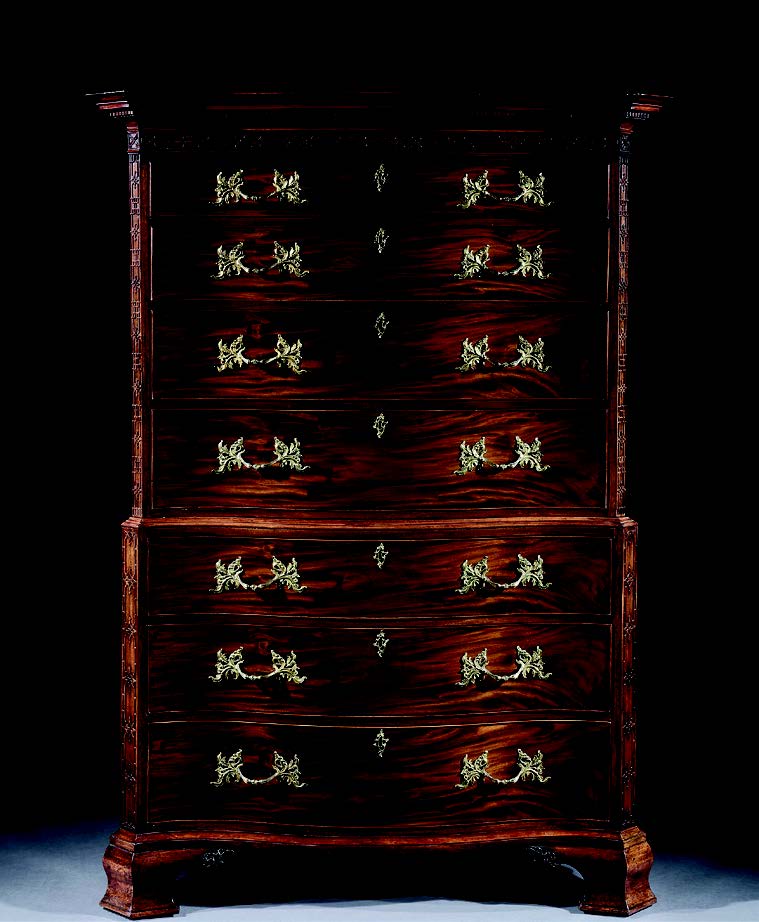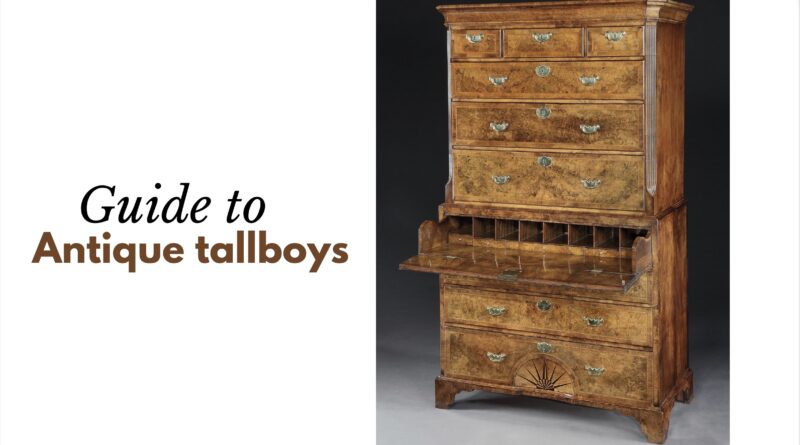Antique 18th-century tallboys – the ultimate guide
 Antique furniture specialist Charlie Mackinnon has high praise for the 18th-century tallboy
Antique furniture specialist Charlie Mackinnon has high praise for the 18th-century tallboy
The tallboy, or chest-on-chest, was a perennially popular piece of furniture throughout the 18th century. It first made its appearance in the late Queen Anne period (c. 1710) as the earlier William and Mary period chest-on-stand evolved into what was known at the time as a “double chest”- to distinguish it from a cabinet-on-chest.
The development of the tallboy also coincided with the creation of the bracket foot. Although, as will be seen later, it is possible to find rare examples of tallboys which hark back to the earlier chests-on-stands and have short cabriole legs instead.

It is also clear that these pieces were made both for use in drawing-rooms and other more public spaces in a house as well as bedrooms. It was their extreme versatility, providing a large amount of storage space for a relatively small amount of floor space, that led to the enduring popularity of the design.
Restrained elegance
Due to their decorative qualities and usability, later tallboys survive in large numbers. However, people looking for good examples will find they are harder to come by and some advice might be helpful.
Look for colour, patination and originality of surface, hardware and feet, oak-lined drawers and excellent proportions. If not crafted with skill, a tallboy could be made to look somewhat cumbersome and blocky.
A good cabinetmaker knew how to graduate drawers proportionally in order to increase the surface interest of a piece. They would also strive to create a tallboy with a low waist which was considered most desirable.
If a simpler piece was required, the best makers produced a tallboy of restrained elegance that was still both attractive and desirable.
Sunburst design
Fine examples of tallboys allow us to trace the development of the furniture throughout the 18th century. The piece (above) dates to c. 1720 and has all the refinements a collector would look for in a tallboy from this period. Apart from exceptional colour and patina, it has an inlaid and recessed concave sunburst design on the lowest drawer – always seen as a particularly desirable feature on these early walnut examples.
Rarer still is its secretaire-drawer. All of the brassware is original, making it a very desirable piece of furniture indeed.
Unusual drawers
The tallboy below is another walnut example, of a slightly later date, c. 1740, but of equally magnificent colour The proportions are perfect and, again, the hardware
is all original and of very high quality. The drawer configuration is also slightly less common than usual, with three small drawers across the top, which is a more desirable variation on the more standard format.

While it is the exceptional veneers and wonderfully patinated surface that first catch the eye, the piece is exceptional throughout.
Veneered mahogany
The tallboy below is veneered in mahogany and dates from c. 1750. It was once owned by the renowned King’s Road dealer Jeremy Ltd. and was illustrated in the Coronation edition of Connoisseur magazine in 1953. It boasts the rare feature of very short cabriole legs.

What is even rarer is the outstanding carving throughout, in particular the floral carving on the canted sides. The colour and patination is also untouched and eye-catching and, to add further interest to an already exceptional piece, it includes a secretaire-drawer.
The hardware is also magnificent making it a fine example that would grace any fine collection, or act as a focal point in a more contemporary room setting.
Serpentine fronted tallboy
While most tallboys are flat-fronted, it is the rarer, serpentine- fronted designs which are most sought after. The rococo period example below dates to c. 1765 and makes use of the wide variety of decorative treatments of the day, including blind fretwork, outstanding handles and escutcheon plates.

Its massive ogee bracket feet have scrolled detailing and the overhanging top has canted corners and numerous mouldings.
Top cabinetmaker
Such a grand piece would doubtless have been designed for the more public rooms of an important residence. A similar piece, with equally impressive but slightly different rococo handles, is in the collection of the Cecil Higgins Art Gallery in Bedford.
It is possible this piece was made by the eminent London cabinet-maker Philip Bell who was known to use distinctive patterns of blind fretwork in the same way. Several pieces made by Bell retain their original trade labels and they are discussed in Christopher Gilbert’s Pictorial Dictionary of Marked London Furniture 1700 – 1840. Without doubt it was the work of a top London cabinetmaker working for a very wealthy client. It was sold by the celebrated antique dealers Hotspur Ltd. of Belgravia in 1981 and is a very rare example.
Rococo style tallboy
A later excellent example of a more restrained form can he seen, right, dating to c. 1775. The hardware used, particularly the beautiful escutcheon plates, is still rococo in style but the pared down aesthetic shows a certain awareness of the sweeping changes in taste that accompanied the neoclassical period in England.

It is lovely piece of furniture with a fine colour and tastefully chosen veneers and would make a lovely accent piece in any sophisticated interior scheme.
Charlie Mackinnon is the owner of Mackinnon Fine Furniture, 5 Ryder Street, St James’s, London, SW1Y 6PY. For more details go to www.mackinnonfineart.com.

